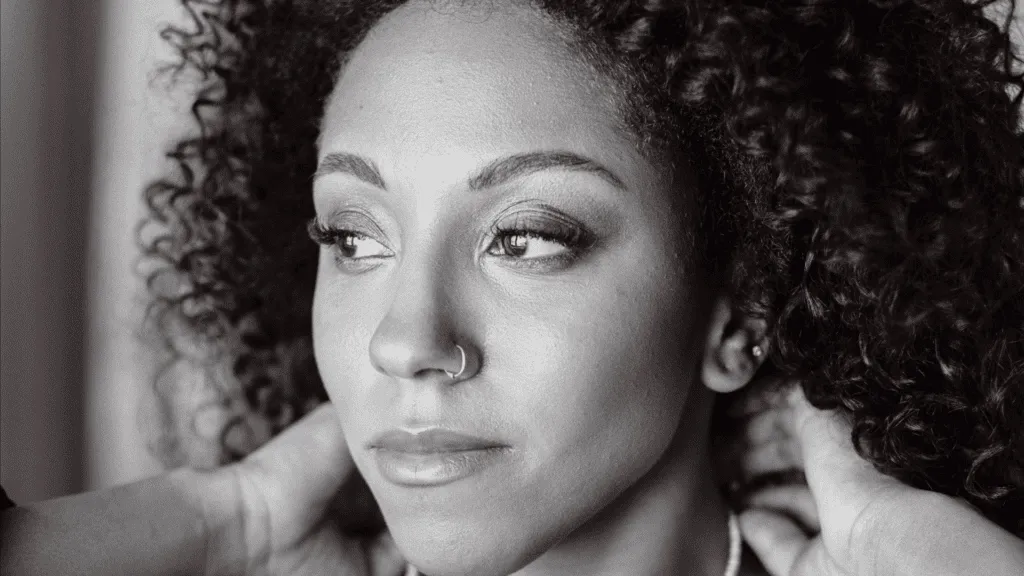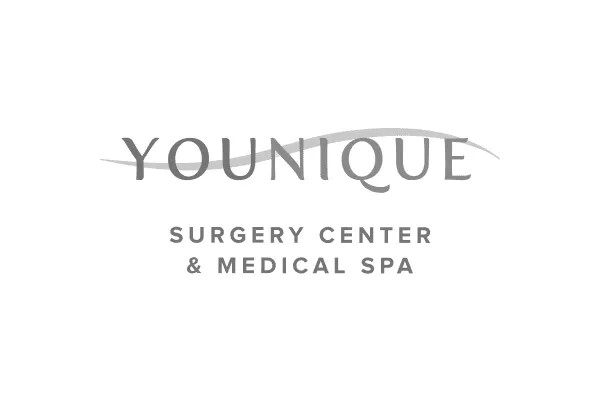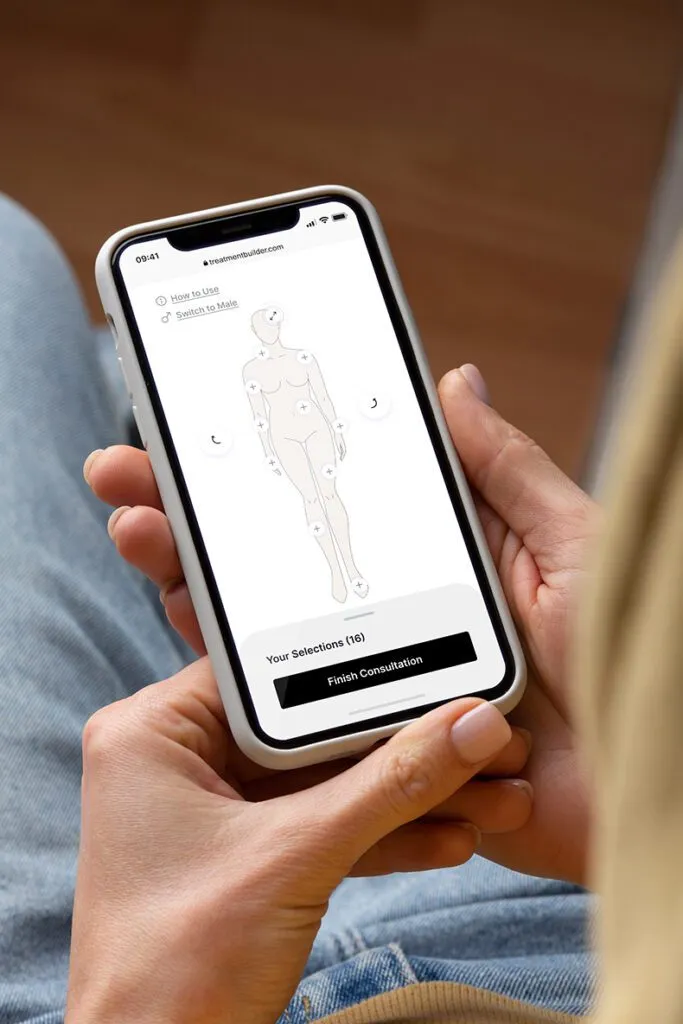
This post provides a brief overview of the most common types of noses so you can finally answer the question, “What type of nose do I have?”
What type of nose do I have?
While every nose has unique variations, most can be categorized based on common characteristics of the bridge, tip, and nostrils. Understanding these specific features is the first step to identifying your own nose type. So, before we get into the list of common shapes, let’s cover how to properly assess a nose to determine its shape.
How do you determine nose shape?
Determining your nose shape requires a bit of facial analysis. Using photos or looking in a mirror, pay close attention to the features listed below:
Nasal bridge (dorsum)
This is the long part running from between your eyes down towards the tip.
- From the side: Is it straight? Does it curve outwards or have a hump (convex)? Does it curve inwards or look scooped (concave/saddle)? Is the starting point between your eyes high or low?
- From the front: Does the bridge appear generally wide or narrow?
Nasal tip
This is the very end or point of your nose.
- Shape: Is it pointed, rounded, fleshy and wide (bulbous), or small and neat (like a button)?
- Rotation: Does the tip angle slightly upward (upturned/celestial), downward, or does it point straight ahead? The angle between your upper lip and the bottom of your nose helps define this.
- Definition: Does the tip have clear angles, or is it softer?
Nostrils
Look at the size and shape of the nostril openings, usually viewed from the front or slightly below. Are they large, small, round, narrow, or flared?
Size and proportion
Lastly, how does the size of your nose compare to other facial features? Does it seem long or short from the top (root) to the tip? Does it seem wide or narrow across the bridge or at the base of the nostrils?
By carefully observing these nose features, you can begin to compare your nose to the common types described below.
Types of Noses
Here are 14 of the most common nose types, each with its own set of distinctive features:
Straight Nose
The straight nose, as its name suggests, is defined by a nasal bridge that runs relatively straight from the area between the eyes down towards the tip. When viewed from the side, it’s smooth and even.
Greek Nose
Greek noses are distinguished by their high, straight bridges. They appear as an almost perfect line from the forehead to the tip of the nose, with little to no bump or curve. It’s famous for its association with classical Greek sculptures.
Roman Nose
Roman noses have a prominent, curved bridge that projects outward. This creates a strong, distinguished profile reminiscent of figures in ancient Roman art.
Hooked Nose
Also known as an aquiline nose, this shape features a bridge with a sharp, downward curve resembling a hook in profile view. The tip itself may also point downwards.
Saddle Nose
Saddle noses have a noticeable dip or concavity in the middle when viewed from the side and appear somewhat “scooped out” or like a saddle.
Bulbous Nose
Bulbous noses stand out because of their rounded, often larger and fleshy tip that gives them a bulb-like appearance. It often lacks sharp angles or strong definition.
Round Nose
Round noses feature soft curves and a round tip. The bridge is usually smooth, and there aren’t many sharp angles, giving the nose an overall rounded impression.
Button Nose
Button noses are small and delicate, with a slightly upturned tip. The bridge is typically straight or may have a subtle scoop.
Snub Nose
Snub noses are shorter in overall length and are characterized by a noticeably upturned tip that exposes more of the nostrils in a frontal view. The bridge may be flat or slightly concave.
Turned Up Nose
Turned-up noses are similar to snub noses in that the tip angles noticeably upward. It often has a straight or slightly scooped bridge profile and can be longer than a snub nose.
Long Nose
Long noses are defined by their length relative to other facial features. It’s noticeably long from the root (between the eyes) down to the tip. The specific shapes of the bridge and tip can vary.
Wide Nose
Wide noses appear broader than average in proportion to other facial features. The width might be primarily across the nasal bridge, across the base where the nostrils are, or both. Other features like bridge height or tip shape can vary.
Boxer Nose
Boxer noses are often seen in individuals who have experienced trauma to the nose (such as boxers) that may have led to the cartilage and bone structure changing over time. They’re somewhat wide, potentially flattened across the bridge, and might have a less defined or even rounded/bulbous tip.
Barbie Nose
Barbie noses are narrow with a straight or slightly sloped bridge and a delicately refined, slightly upturned tip. This is a pop-culture or colloquial term used to describe a specific aesthetic ideal, and it’s one of the most popular requests in rhinoplasty.
What’s the most common nose shape?
The “fleshy” nose, typically described as bulbous, rounded, and wide at the tip, is cited in some studies as the most common nose shape, accounting for 24% of noses.
Can you have a combination of nose shapes?
Absolutely! It’s actually very common for a nose to blend features from multiple categories. For example, someone might have a bridge that fits the “Roman” description but a tip that’s more “Bulbous” or “Turned Up.” Or maybe your nose profile is mostly “Straight” but also qualifies as “Wide.”
What can I do if I don’t like my nose shape?
If you’re unhappy with the shape of your nose, there are surgical and non-surgical options available to reshape it. The primary and most permanent solution is rhinoplasty, also known as a nose job.
If you’re looking for a temporary, non-surgical fix to reshape your nose, dermal fillers might be a good option. However, dermal fillers are often temporary, lasting from months to a year or two, and cannot physically reduce the size of the nose.
Whatever path you choose, our team at Younique Surgery Center & Medical Spa can help you decide which option is best for you.
The Bottom Line
When it comes down to it, the “ideal” nose is subjective. There are several elements that determine your nose shape. If you’re considering changing your nose shape, procedures like rhinoplasty offer permanent solutions, but the first step should be a thorough consultation to discuss your goals and options.
Ready to take the next step with Younique?
If you’re considering rhinoplasty or have questions about other facial cosmetic procedures, we’re here to help! Schedule a personalized consultation with our expert team, led by Dr. Mark Youssef. We’ll listen to your goals, evaluate your needs, and explain the best options available for you at Younique Surgery Center & Medical Spa.



